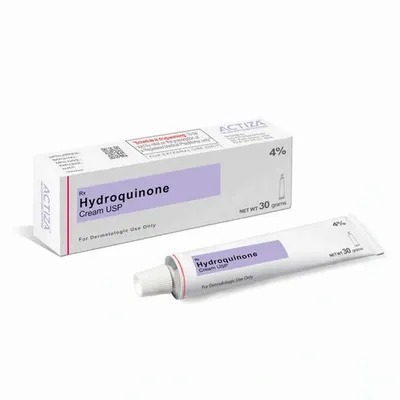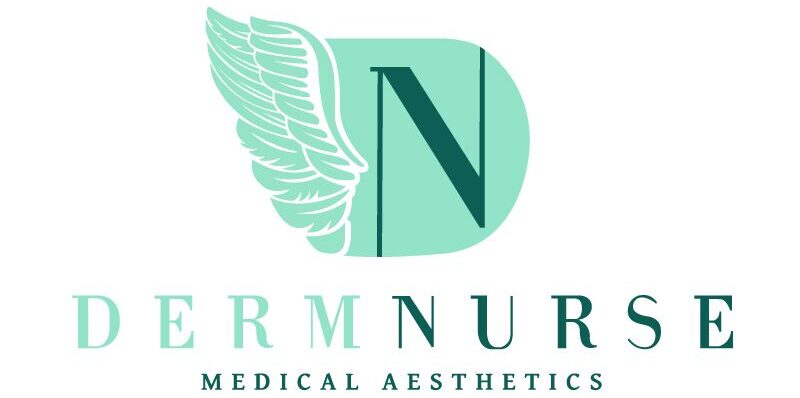SKIN LIGHTENING PRODUCTS
HYDROQUINONE USE
HOW DOES IT WORK?
Hyperpigmentation, or a focused darkening of the skin compared with the surrounding skin, is the third most common dermatological disorder and often causes significant psychosocial consequences. Causes of hyperpigmentation can include metabolic issues, immunodeficiency issues, hormonal imbalance, pregnancy, medications such as birth control pills, and inflammation. It is, therefore, important to address underlying causes before proceeding with a treatment plan.
Melasma is similar to hyperpigmentation in that is involves darkened skin compared with surrounding skin but occurs in a symmetrical pattern. For example, both sides of the face in the same area such as cheeks, or central face including forehead, nose, upper lip, chin, and along jawline. More common in females and those with darker skin types. Melasma is mainly caused by UV exposure and hormonal imbalances and is harder to treat successfully than basic hyperpigmentation.

Hydroquinone has been used for over 40 years to treat hyperpigmentation and is the most studied agent for lightening pigmentation. It works by preventing new melanin production with the goal of making the hyper-pigmented areas achieve the same skin tone as the surrounding skin.
Scientifically, hydroquinone works by inhibiting tyrosinase, which prevents the production of melanin, which produces skin color. In several studies, the use of HQ 4% has led to a statistically significant improvement of hyperpigmentation and melasma. Although very effective, it can cause dermatitis in some individuals, and chronic use can lead to blue or black permanent pigmentation if not used properly.
Although it is effective for superficial (epidermal) skin pigmentation, it is not useful for deep dermal pigmentation.
Hydroquinone is required by Health Canada to be a prescription as of July 1, 2019
POTENTIAL SIDE EFFECTS
- Hydroquinone will make you more sun sensitive so be sure to use a sunscreen during the day.
- Hydroquinone will also cause some anticipated reactions (flaking, redness & sensitivity – these are good signs of repair and will dissipate as skin becomes stronger and more tolerant of the products).
- Hydroquinone products (such as Melamin & Melamix) should not be used for more than 5 months. Take a 2-3 month break then you can resume using the Hydroquinone products again.
- Please do not spot treat with the Hydroquinone products but rather apply these products all over the skin evenly and not just to the affected pigmented areas.
- Discontinue the product and seek immediate medical advice if you experience severe burning, itching, crusting, or swelling of treated areas and any unusual skin discolouration.
- Do not use hydroquinone if you are pregnant or breast feeding. Not enough studies have been done on the effects on the unborn fetus or breastfeeding baby.
HOW DO I USE IT?
Application: Apply a thin layer of hydroquinone (2–4%) to freshly washed skin twice daily for 3-6 months. The application of Alumier Bright and Clear solution (or any solution containing alphahydroxy acids (AHAs) like glycolic acid, lactic acid, and mandelic acid) just before applying your hydroquinone will help the hydroquinone penetrate better and speed brightening. Retin-A at night also helps!
AM Routine
1. Cleanse your face (60 secs.)
2. Hydroquinone (1-2 Pumps)
3. Chemical Exfoliation by ZO (start at 3x per week and build to daily use)
4. Moisturizer (optional). We recommend Revitatrol by ZO
5. Sunscreen (SPF 30 or more)
PM Routine
1. Cleanse your face (60 secs.)
2. Hydroquinone (1-2 Pumps if you can tolerate 2x per day)
3. 0.5% Retinol (1 pump, start 3x per week Monday, Wednesday Friday x 2 weeks and build to nightly use)
4. Apply a moisturizer if needed. We recommend Revitatrol by ZO
Results: You should start to see results in 4 weeks of use as directed.
If no results are seen by 2 months, hydroquinone should be discontinued. Hydroquinone cream is usually well tolerated. However, some users may experience minor and temporary skin irritations including mild itching or stinging and reddening of the skin If these do not subside within 1-2 weeks, stop using the cream and visit the clinic.
Bleaching effects are reversible, therefore, hyper-pigmentation usually returns after discontinued use in 1-2 months.
WEANING OFF HYDROQUINONE
You should never stop using Hydroquinone products abruptly but rather wean off them slowly to prevent rebound pigmentation.
Use Hydroquinone products twice daily or daily for 3 months then start to wean yourself off by following these instructions:
- Month 4: weeks 1 & 2
4 days using the Hydroquinone products, the remainder of the week use Non-Hydroquinone products (Retinol Skin Brightener, 10% Vitamin C Self Activating, Brightalive, Wrinkle & Texture Repair). - Month 4: weeks 3 & 4
3 days using the Hydroquinone products, the remainder of the week use Non-Hydroquinone products. - Month 5: weeks 1 & 2
2 days using the Hydroquinone products, the remainder of the week use Non-Hydroquinone products. - Month 5: weeks 3 & 4
1 day using the Hydroquinone products, the remainder of the week use Non-Hydroquinone products. - Month 6
You should now be only using Non-Hydroquinone products for three months. Then you may start hydroquinone again if you wish, following the same instructions.
PRECAUTIONS
Allergies: Hydroquinone creams may contain sodium metabisulphite, which may cause serious allergic reactions (including anaphylaxis) if you are allergic to it.
Pregnancy or breast feeding: Hydroquinone should not be used in pregnancy or when breastfeeding.
Sunscreen: Those who use hydroquinone must apply sunscreen with an SPF of 30 or more daily. Hydroquinone makes the skin more susceptible to sun damage and photosensitivity. Skin care ingredients to avoid: Here’s the list of ingredients you should avoid while using hydroquinone products: hydrogen peroxide, benzoyl peroxide, any other peroxides, and resorcinol. Leads to skin discolouration. Resorcinol is found in quite a few popular skin lightening products such as Clarins Vital Light Serum, Clinique Even Better Clinical Dark Spot Corrector, and Philosophy Miracle Worker Dark Spot Corrector so if you’re using any of those, put them aside until you’re finished with your hydroquinone.
NON-HYDROQUINONE SKIN LIGHTENING PRODUCTS
CORTICOSTEROIDS
Corticosteroids can prevent pigmentation through non-selective suppression of melanin production along with producing an anti-inflammatory effect. They are not effective if used alone. Long-term steroid use may lead to superficial broken blood vessels (telangiectasias), acne, thinned skin (epidermal atrophy), streak scarring (striae), and hypopigmentation.

RETIN A
Topical retinoids have been studied and shown to be effective in treating melasma by promoting keratinocyte turnover, which also helps with acne and skin aging. Pregnant or breast-feeding women should NOT use Retin-A or any retinols due to teratogenic effects.
KOJIC ACID
Kojic acid is a naturally occurring hydrophilic fungal product derived from certain species of Acetobacter, Aspergillus, and Penicillium. It reduces hyperpigmentation by inhibiting the production of free tyrosinase needed to produce melanin and is also a potent antioxidant.
SCHOLARLY REFERENCES
Desai S. R. (2014). Hyperpigmentation therapy: a review. The Journal of clinical and aesthetic dermatology, 7(8), 13–17.: Reference URL
Ogbechie-Godec, O. A., & Elbuluk, N. (). Melasma: an Up-to-Date Comprehensive Review. Dermatology and therapy, 7(3), 305–318. doi:10.1007/s13555-017-0194-1
Sarkar, R., Arora, P., & Garg, K. V. (2013). Cosmeceuticals for Hyperpigmentation: What is Available?. Journal of cutaneous and aesthetic surgery, 6(1), 4–11. doi:10.4103/0974-2077.110089
